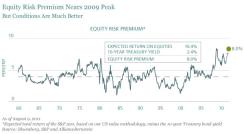This blog is part of a new series on Institutional Investor entitled Global Market Thought Leaders, a platform that provides analysis, commentary, and insight into the global markets and economy from the researchers and risk takers at premier financial institutions. Our first contributor in this new section of Institutionalinvestor.com is AllianceBernstein, who will be providing analysis and insight into equities.
The equity market meltdown of the past two weeks has raised widespread fears that we’re headed for a repeat of the wealth destruction seen in 2008. There are certainly some close parallels, but I also see some very big differences in the root causes of the two crises.
The Parallels
In both periods triple-A ratings on widely held bonds came into question.
In both periods fears about the quality of those bonds spread globally and across asset classes.
And in both periods uncertainty about government policy and regulation added fuel to the fire and led to a crisis of confidence.
The Differences
The crisis in 2008 rose from the bottom up on concerns that banks would have huge losses on their once-triple-A-rated mortgage securities. The 2011 market drop started at the top: The outlook for sovereign debt, supposedly the safest asset class, came into question.
In 2008 the financial sector was weak. In 2011 it is much stronger because banks have raised capital and taken advantage of the steep yield curve.
In 2008 companies were overleveraged and dependent on short-term debt for operating capital. In 2011, U.S. corporations have $2 trillion in cash on hand and rock-solid balance sheets — and they are generating huge amounts of cash as well. The balance sheets of non-U.S. companies are also much stronger than they were, although not quite as strong as their U.S. counterparts.
In 2008 consumers were overleveraged. They have been deleveraging ever since. They have more work to do in this regard, but they are moving in the right direction.
Last, hedge funds are far less leveraged than they were three years ago and have much less exposure to illiquid assets, so they are much less likely to be forced sellers driving the market down. Forced selling was a crucial element in the market drop of 2008.
What does this mean to us as portfolio managers?
Where we manage multi-asset-class portfolios with a one-year horizon, we’ve been reducing equity exposure below the strategic asset allocation. We’ve also hedged about half the euro exposure for many U.S.-based clients in these portfolios to mute the risks from the euro’s structural problems.
But from a long-term perspective, we find stocks uncommonly attractive relative to the fixed-income alternative. Equity valuations, which were low even before the market turbulence of the past two weeks, have fallen even lower. Yet companies now have strong upside potential, for several reasons:
• Lower oil prices, like a tax cut, will increase consumers’ spending power.
• If inflation fears recede, emerging-markets countries such as China will be able to adopt more stimulative policies.
• There is a pent-up demand for capital spending, which has been deferred for the past three years.
• Interest rates are low, and expected bond returns are muted.
As a result, the U.S. equity risk premium — the difference between the long-term expected return on the Standard & Poor’s 500 index and ten-year Treasury yields — had hit 8 percent by Monday’s close (see display below). That’s about double its long-term average and close to the historic peak it reached in early 2009, which proved to be an excellent time to buy stocks. We expect that the same will hold true now — for those with a ten-year time horizon.

Seth Masters is Chief Investment Officer—Asset Allocation at AllianceBernstein
The views expressed herein do not constitute research, investment advice or trade recommendations and do not necessarily represent the views of all AllianceBernstein portfolio management teams.






